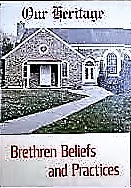THE HEALING OF THE ANOINTED ONE Vs. 15
There are a number of factors working together in the healing of the sick saint of God. And each one has its bearing.
1d. The divine source of the healing is clearly set forth as the Lord. "And the Lord shall raise him up."
All healing comes from the Lord, no matter what medium may be used, or what prayers may be offered, or what gifts may be exercised. The Lord is the one who heals. He may do so immediately, without means; or He may do so immediately with means. He may do so instantly; or He may bring about recovery over a period of time. He may supernaturally intervene to recover the sick one; or He may use providential means.
2d. The human appropriation of the healing is by means of the prayer of faith. "And the prayer of faith shall save the sick". There are three important things about this prayer. This is the prayer of the Elders and not the sick one.
le. It is a prayer of worship and devotion displaying the motive of the one who prays.
The word for prayer in the original so indicates this. The definite article is with this word. It is "the prayer." It is a recognition that God is high and holy and good. It is a recognition of God's plan and purpose and displays a desire to find one's proper place in that plan and purpose.
2e. It is a prayer according to the will of God thus asking for that thing which pleases God.
This prayer is the prayer of "the faith." The definite article is used here, and first of all this refers to that body of truth which sets forth God.
Objectively then, this prayer is one in harmony with the truth about God and for the sick one. Such a prayer is according to his will (1 John 5:14) and one which God will be pleased to answer. Subjectively this prayer is one of faith on the part of the elders God is the one who gives faith in his truth (Eph. 2:8-9; Heb. 11:1: and in this special case. Such faith God honors, for it seeks his will.
3e. It is a prayer that is wrought within by God himself and points to the manner in which this prayer is prayed. In vs. 16 this statement appears: "The effectual fervent prayer of a righteous man availeth much." This rendering of the A.V. makes it sound like the prayer depends upon the righteous man. The word translated "effectual fervent" has been treated as a middle voice. Whereas the same word in the other 18 uses within the N.T. is always passive. Here it must also be the same, so this sentence should read: "The prayer of a righteous man, which is being wrought within him, accomplishes much" This makes God the energizer of this prayer, and such prayer gets results. The same word is used in Phil. 2:13 Compare for verification.
3d. The physical effect from the healing.
le. The prayer of faith will be the means of bringing recovery from sickness. "Save the sick" means deliverance from sickness, and thus points to the healing of the body.
2e. The Lord himself is the absolute source bringing about restoration to service.
"The Lord shall raise him up" means raising from a bed of illness weariness, inability to do anything, and placing on the feet and back in service.
3e. The certainty of this event will be in God's time and a reality to the sick.
"Shall save": "shall raise up" Both these verbs are in the future tense. Thus the certainty is guaranteed. But the time is indefinite. It may be soon, or over a period of time.
d. The spiritual blessing from the healing.
le. Personal sins are sometimes the cause of physical sickness and this service will provide an opportunity to face them and forsake them. Cf. John 5:14
2e. But personal sin is not always the cause of sickness. But if there are sins in the life this will give opportunity for the sick one to face them, and confess them. vs. 16
3e. Such sin confessed will be forgiven, whether the sin is the cause of the sickness or not. 1 John 1:9
Thus the sick one will be brought into a closer fellowship with the Lord.
















